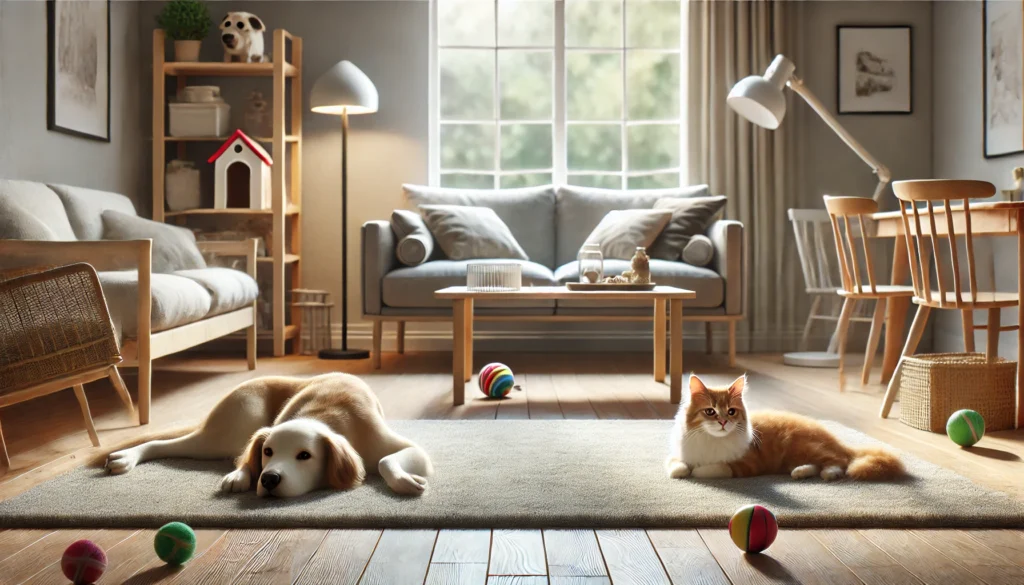Creating a peaceful and comfortable environment for your pet indoors isn’t just about toys and beds—it’s also about observing how your pet feels. Pets communicate comfort and contentment through their behavior and body language.
Here are the top signs that your dog or cat is truly at ease in your home.
Relaxed Body Language
One of the most obvious signs of comfort is physical relaxation.
- Dogs may lay on their side or back with their belly exposed.
- Cats often curl up, loaf, or stretch out completely.
- Both species may breathe slowly and have soft, blinking eyes.
Tension, stiffness, or constant alertness could indicate discomfort.
Normal Eating and Drinking Habits
When pets feel safe, they eat and drink regularly.
- Dogs will calmly approach their food and eat without rushing or guarding.
- Cats will use their bowls consistently and may even graze throughout the day.
Loss of appetite or refusal to eat in your presence might signal anxiety.
Healthy Grooming Behavior
Comfortable pets take care of themselves.
- Cats groom daily and keep their coats clean.
- Dogs may lick their paws or body but not excessively.
Overgrooming or a lack of grooming could mean stress or a medical issue.
Calm Reactions to Household Sounds
A well-adjusted indoor pet is used to the natural sounds of home.
- They won’t flinch at the sound of a door closing or a vacuum running.
- They stay calm when guests arrive or phones ring.
Startling at every noise might be a sign your pet is still adjusting.
Willingness to Explore
Comfortable pets enjoy moving through the space confidently.
- Cats will walk into rooms, jump onto furniture, and explore new objects.
- Dogs will sniff, wander, and check on people throughout the house.
Reluctance to leave a certain area may indicate fear or insecurity.
Enjoying Nap Time in Open Spaces
Confident pets sleep where they feel secure—even in visible areas.
- Cats may nap on window sills, beds, or couches.
- Dogs may nap in the middle of the room, showing they feel safe.
Hiding while sleeping may be normal sometimes, but not constantly.
Seeking Interaction (on Their Terms)
Comfortable pets enjoy social interaction when they’re ready.
- Dogs will follow you around, bring toys, or rest at your feet.
- Cats may rub against you, knead, or sit nearby.
Forced socializing can make shy pets retreat, but consistent gentle behavior helps them open up.
Using Litter Boxes or Potty Areas Consistently
Potty behavior says a lot about how secure a pet feels.
- Cats who consistently use their litter box are likely feeling safe.
- Dogs who ask to go out or use training pads reliably are settled in.
Accidents can signal anxiety, unfamiliar territory, or change.
Showing Interest in Play
When pets feel good, they want to engage.
- Dogs wag their tails, fetch toys, or initiate play with humans or other pets.
- Cats chase toys, pounce, or bat objects for fun.
A lack of interest in play could suggest boredom, depression, or discomfort.
Responding Positively to Your Presence
The ultimate sign your pet is at ease is their response to you.
- Tail wags, head nudges, or purring all signal contentment.
- If your pet comes when called or willingly approaches you, it’s a sign of trust.
Earning a pet’s comfort takes time, patience, and consistency.
If your pet shows most of these signs, congratulations—you’ve created a loving and secure indoor space. If not, small adjustments in routine, environment, and care can make a big difference in helping them feel truly at home.






